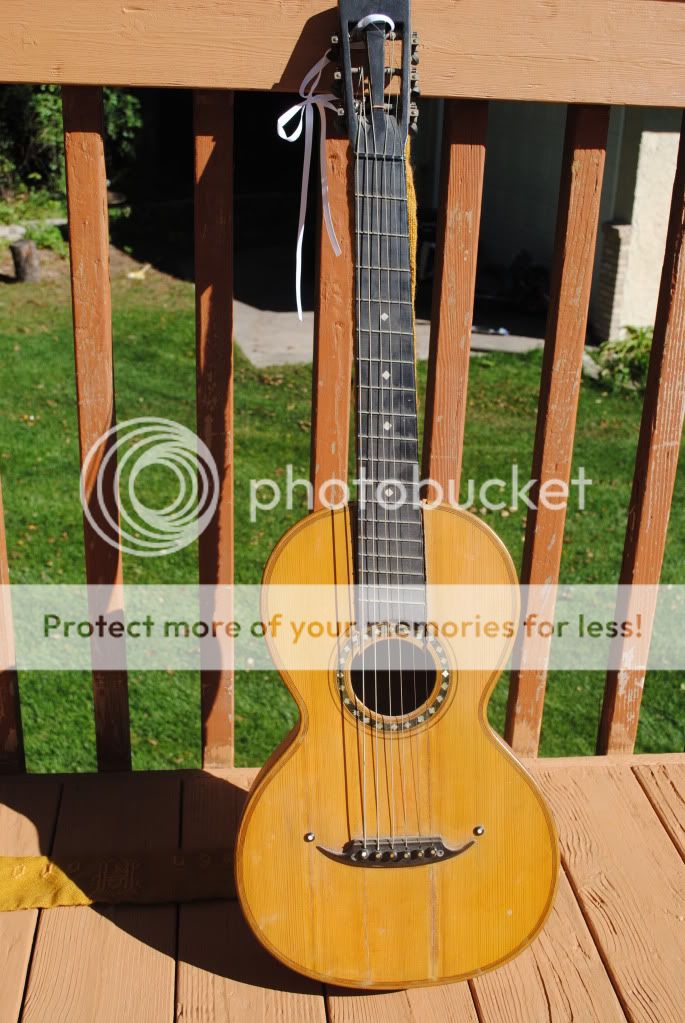A neighbor brought this over to see if I knew what it was.
I don't. I have suspicions, but nothing concrete.
He is in his 80s and this belonged to his grandmother. It passed through Ellis Island as his mother's sole possession in about 1902.
There are no visible markings inside.
Most interesting is the Panormo style bridge and heel. It also has compensated frets which I've NEVER seen on a guitar. Interesting idea.
Too bad someone along the way strung it up with steel strings.
Any help with I.D. of the builder will be appreciated.





Thanks for looking,
Dave